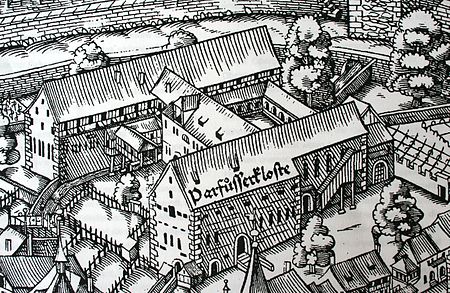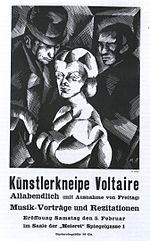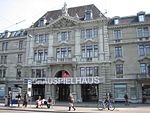Barfüsserkloster

The Barfüsserkloster in the old town of Zürich is a former Franciscan friary. It was first attested in the 1240s and was dissolved during the Reformation, in 1524. The friary was situated in the southeastern corner of the medieval city, between the Neumarkt and the Linden gates (today at Hirschengraben 13/15). After the Reformation, the buildings were used as a grain depot, and during the early 19th century, as a casino. During the 19th century, most of the original structure was lost to significant construction work. The buildings since the 1870s have housed the cantonal court of law (Obergericht), besides the communal wine cellars and a theater. After a fire in 1890, part of the structure was removed, and is now a parking lot. The cantonal court remains the only occupant of the estate.
Excerpt from the Wikipedia article Barfüsserkloster (License: CC BY-SA 3.0, Authors, Images).Barfüsserkloster
Hirschengraben, Zurich Altstadt
Geographical coordinates (GPS) Address Nearby Places Show on map
Geographical coordinates (GPS)
| Latitude | Longitude |
|---|---|
| N 47.3717 ° | E 8.5468 ° |
Address
Hirschengraben 13
8001 Zurich, Altstadt
Zurich, Switzerland
Open on Google Maps










